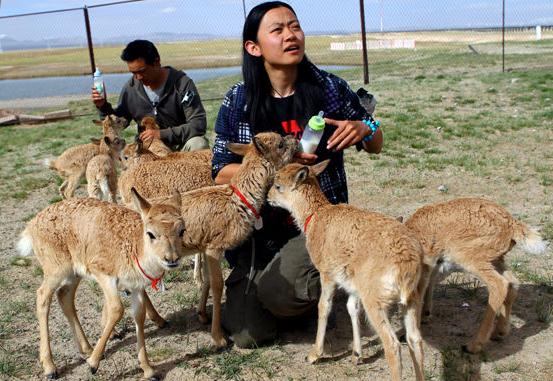

Photo by Zou Hong/China Daily
In the latter part of the last century, poachers targeted the Tibetan antelope because of the popularity of the shahtoosh, a shawl made with the animal's downy hair, in the United States and Europe. Antelope herds dwindled. Once numbering 200,000, the population dropped to only 20,000 by 1997.
A local official, Jesung Sonam Dargye, spent much of his life trying to save the Tibetan antelope, and a movie, Kekexili: Mountain Patrol, was based on his story.
"The sacrifice of Sonam Dargye helped to awaken the public's awareness of the Hoh Xil ecosystem," said Sonam Yangkyid, a delegate to the Qinghai People's Congress. "Now the environment of Hoh Xil has improved a lot. The last will of Sonam Dargye has become reality."
According to data provided by the Hoh Xil Nature Reserve Administration Bureau, no illegal hunting has been conducted since 2006, and the antelope population has rebounded to at least 60,000 in the area.
Zhu Chunquan, representing the International Union for Conservation of Nature China Office, said the case of the Tibetan antelope is an example of an important wildlife management success, and the experience acquired can be adopted in other areas for other endangered species.
"The first lesson is to tell the right story," Zhu said. "Many consumers in the United States and Europe didn't know their purchase would cause the death of the Tibetan antelope. With global publicity, demand has curbed dramatically."
"Second is the engagement of the local government and local people," Zhu said. "The central government began to pay attention when the local government and local people devoted a lot of energy to this."
Copyright ©1999-2018
Chinanews.com. All rights reserved.
Reproduction in whole or in part without permission is prohibited.